 Back to selection
Back to selection
New Model Army
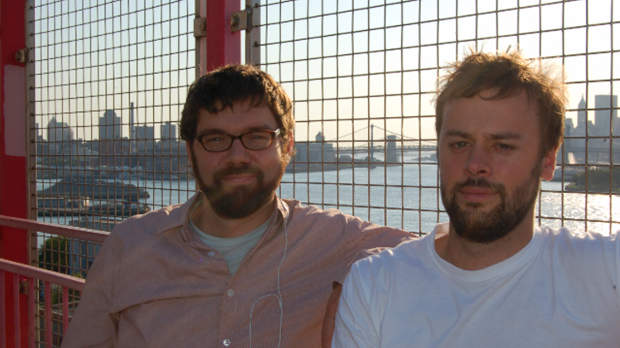
Making a business out of independent film is harder than ever. But still, great films are being made. In this series of short profiles, Filmmaker asked a number of leading independent producers about their producing models and how they’re finding everything from financing to material to office space.
For Parts and Labor’s Jay Van Hoy and Lars Knudsen, independent film success is all about work. Very hard work.
Midway through our conversation about their recent producing successes, Jay Van Hoy and Lars Knudsen realized that they hadn’t had a day off in 18 months. “You did seven-day weeks for a year-and-a-half?” I asked. “Well, there was one weekend during SXSW…” Jay replied.
For Van Hoy and Knudsen, whose Parts and Labor is one of New York City’s most active and auteurcentric production companies, getting films made is simply about doing the work. (And no, a weekend of downtime while attending a film festival doesn’t qualify as “days off.”) The duo’s recent marathon production stretch began in spring 2009 with Aaron Katz’s Cold Weather shooting in Portland. Next up was Cannes and then, for Knudsen, Armenia to shoot Braden King’s feature, Here. Van Hoy planned to go to China with Julia Loktev for her new feature, The Loneliest Planet, but financing didn’t come together and the project was pushed. But in the fall Mike Mills’s Beginners did go into production, shooting up until the Christmas holidays. By then Cam Archer’s Shit Year was in the can too. “We spent the holidays mixing Cold Weather and Shit Year,” says Van Hoy, “and then we had to get Cold Weather ready for SXSW. We were doing post and reshoots on Beginners in L.A. and we had production meetings in Cannes [where Shit Year premiered] for Loneliest Planet, which wrapped [in the Caucasus Mountains of Georgia] on Labor Day. I felt such relief that weekend. Mike’s film was finished too, and I took four days off.” Of course, just days later was Toronto, where the well-received Beginners was picked up by Focus Features in a reported $2 million deal.
Such perpetual motion can only be effective if there’s a partnership strategy behind it. Says Van Hoy, “Lars and I meet twice a week to go through all the films. One of the things we try to do is make sure the work is interchangeable. It’s pretty selfless. I want to make sure Lars knows everything so he can take care of everything [in my absence] and vice versa. Directors often call me ‘Lars’ and Lars ‘Jay,’ and when that happens, that’s kind of a good thing.” Do sneaky directors ever try to play one producer off against the other? “That’s a huge mistake,” says Van Hoy. “It doesn’t work.” The duo also frequently partner with other producers, joining Leslie Urdang, Miranda de Pencier and Dean Vanech on Beginners, for example.
Parts and Labor has a Brooklyn office and also a first-look deal with producer Scott Rudin (The Social Network), for whom both Van Hoy and Knudsen once worked. That helps cover overhead. “We have one assistant,” says Van Hoy, “but at various points [in the last 18 months] we have gone through two other assistants.” Lucas Joaquin and Tory Lenosky have moved from assistants to “junior producers,” with both handling service work and Joaquin overseeing delivery. In order to cover their salaries this summer, Van Hoy rented out his space in the Parts and Labor office as an edit suite for another production, the Alaska-shot On the Ice, and diverted the funds into payroll.
Knudsen says that as the company grows, the projects it is taking on are diversifying, allowing them to employ different financing models. “The films in our past were all ‘equity plus tax credit,’” he says. “But now we are working with several Scandinavian directors and doing co-productions with German producers. We’re working with a Danish director where the financing is already in place. For Loneliest Planet, 45 percent of the budget is private equity and the rest is presales [to ZDF] and a German co-production. For The Wanderers, a film we’re doing with Fellipe Barbosa, we moved the location from Prague to Berlin because we knew we could find a German partner and get as much as half of our budget there. Our partner is now trying to get as much public, or soft, money as they can while we focus on casting. Then we’ll look for the missing equity piece.” Continues Van Hoy, “At that point we can present investors with a waterfall that shows lower risk. And we’ll have feedback from the marketplace in terms of sales estimates.” “We fully expect to be able to shoot in the spring,” says Knudsen. Summarizes Van Hoy about their model: “Be creative about the financing, make films for really low budgets, and do several jobs at once.”
Although Parts and Labor are getting involved in larger-budget projects, Van Hoy says “we fully expect to continue making films at $100,000 or however low the films can be made for. These can be really great experiences, and the productions don’t have to be so painful.” But he also acknowledges that fees on such films are usually “zero, or they just cover travel,” and that “how much money we are able to make definitely affects what projects we can take on. We are prone to take on original films that appear risky, or ‘execution dependent.’ But then something like Beginners comes along, and [its reception] is a vote of confidence. On the page, there were so many ways that film could have gone wrong. But we believed in Mike and the movie. We could see the finished film and got there. Hopefully that leads to other more ambitious films.” — Scott Macaulay
Ron Yerxa and Albert Berger
Bona Fide’s Ron Yerxa and Albert Berger continue to stay in the game with their eye for great books.
Ron Yerxa and Albert Berger have been producing independent and studio films for more than 20 years. In the 1970s, as the counterculture was fading, Yerxa followed some friends into the L.A. film world who had been anti-Vietnam war activists now looking for a new place to target their energies. Yerxa ran a street school for high school students during the day while hanging with the fellows at the old AFI at Greystone Mansion at night. Berger opened a repertory film theater in Chicago before attending Columbia University Film School. In 1993, they named their newly minted partnership Bona Fide Productions and traveled to Sundance.
“We were at the first screening of sex, lies, and videotape,” recalls Yerxa. “Soderbergh was an unknown at the time, and the theater was only half-full.” They invited the director for coffee to discuss working together. “By the end of the festival Soderbergh was surrounded by a mob wherever he went, but that coffee led to us making King of the Hill with him a few years later.”
Berger and Yerxa have become well known for their skill and experience in bringing books to the screen, something they’ve done with Election, Cold Mountain, Little Children, Bee Season, and others. “Books are helpful in many ways,” says Yerxa, “because you have a tangible foundation — you might end up tearing down the walls and adding a second story — but a least you have the footprint as a guide.” He cites as an example the ending of Little Children, which changed significantly from book to script. “[The writers] put in a scene at the end of the film where the character who has been accused of child molestation (played by Jackie Earle Haley) castrates himself. His guilt is a fact of the book. In the film, the story is a bit different; the community is guilty of an unfounded vigilante pursuit, and that’s what leads him to this act. That concrete, visual moment — blood seeping through his pants, as he repeats, ‘Now I’ll be good,’ — it coalesces something on screen in 15 seconds that threads through most of the novel.” Yerxa says that the producers probably favor books because “it’s hard to find completed scripts that embody the themes and ideas we want to investigate.”
The market for literary material has become much more competitive since they began, and Yerxa says it takes six to nine months to come up with a first draft. “Knowing what you’re looking for, in terms of theme and genre, is an essential filter when you’re looking for material,” he continues. “We’re not interested in escapist comedies, but comedies that grapple with the tangled American social fabric. Books and scripts that embrace the weirdness and contradictions inside this exuberant culture, that’s where we really like to go exploring.” Speaking of their most challenging adaptations, he adds, “Some books are so internal or cerebral that they seem to be unadaptable, but you just have to struggle to find some radical new perspective that cracks them open as films.”
The business has changed in other ways as well. Yerxa reflects, “When we started producing, it seemed that developing and casting the material was the heart of the job but now the financing, distributing and marketing have become paramount. What was 20 percent of the job is now 80 percent of the job. Producers now are holistic entrepreneurs.” — Alicia Van Couvering.
Diane Weyermann
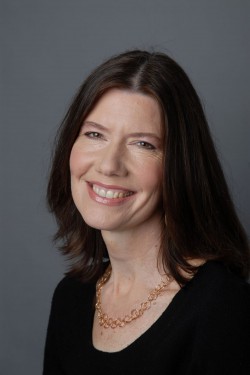
For executive producer and Participant Media exec Diane Weyermann, successful doc production means knowing the power of your audience.
As the Executive Vice President of Documentary Production at funder and producer Participant Media, Diane Weyermann has what she calls “a double bottom line, which is to create films that are compelling stories that have the potential to affect change.” Given that Participant’s credits include An Inconvenient Truth, Food, Inc. and the current documentary hit Waiting for “Superman,” she has a pretty good track record of picking the right film at the right time.
Taking on average two to three years to get a film from development to a festival, Weyermann is something of a forecaster, trying to find the right film for a time that doesn’t even exist yet. To ensure that the issues in her films haven’t “been beaten to death” by the time the film enters the marketplace, Weyermann tries to avoid pet media issues. The last thing she wants is to be “one of five films” covering the same issue.
Weyermann emphasizes the importance of aligning high quality talent like Waiting for “Superman,” director Davis Guggenheim with their “passion subjects,” attributing the “Superman” juggernaut to Guggenheim’s ability to “take characters and stories and weave them all together in a powerful way that is emotionally devastating.”
A hands-on exec, Weyermann stays active during the postproduction process, “coming in at key moments” and offering a “well-informed but a slightly different perspective than someone who is in it from day in to day out.” She stresses that her participation is “very open. I don’t give notes and say ‘you must.’ It’s a ‘try this, try that, have you thought about that’ kind of conversation.” She tries to avoid “dictatorial notes.”
However, Weyermann notes that in the end quality is no guarantee of box-office success in this tough theatrical market. Participant’s recent documentary about nuclear disarmament, Countdown to Zero, a film she stresses she’s “very proud of,” didn’t do much box office despite “playing really well” and being “well-reviewed.” Weyermann conjectures that part of what made Countdown a challenging sell is that it tackled an issue that no longer had a movement behind it, making it “hard for an individual to feel they can impact on the issue.”
Weyermann thinks that the films with the strongest potential are the ones that tackle issues that not only “personally touch people” but also make them feel like “they can personally do something.” The most likely box-office successes are those that “give people a place to go, and a way to connect…With “Superman”, they can become involved with the school board. With Food, Inc., they can decide what they want to eat.”
As a producer, Weyermann thinks you have to do more than just inform the people — you have to empower them, too. — Mary Anderson Casavant
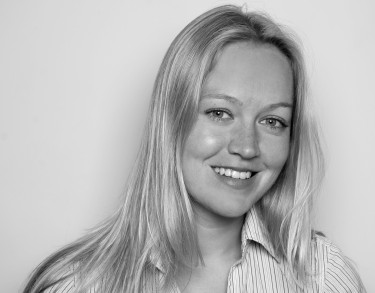
Lynette Howell
How to pay oneself a salary, maintain an office and employ assistants? And embrace risky projects? For Lynette Howell the answer is staying in constant motion.
Raised in working class Liverpool, Lynette Howell decided to drop her British accent after just a few months in L.A. “I was tired of everyone asking me to repeat myself,” she says, but admits it returns when she steps onto U.K. soil or speaks to a fellow expatriate. Howell, 24 at the time, was running the theatrical division of East of Doheny, where she oversaw Broadway projects like The Full Monty and Big River.
She decided to move into films. She knew she wanted to learn production, but she didn’t want to spend years working her way up the physical production ladder. So she raised a multi-million dollar film fund with partner Doug Dey, and in 2005 they started producing movies under their Silverwood Films banner. Stephanie Daley and Half Nelson were her first projects, and their success, combined with the readily available money in their fund, allowed Howell to move very quickly, even though she had sacrificed producing fees in order to realize these films on their modest budgets.
Five years later, Howell has produced 11 films (including Blue Valentine and Phoebe in Wonderland), and she is in production on number 12. Howell has cobbled together financing for her films from every imaginable source — on one recent production, a half-dozen separate equity investors combined with six figures worth of in-kind donations and cash-flowed tax credits. As her budgets grew larger, she could begin to draw a salary. “On films at the Half Nelson level, no one’s getting any fees,” she says. Recently, she completed On the Ice, an Inuit/English thriller by “25 New Face” Andrew Okpeaha MacLean. Featuring non-professional actors, it was shot in freezing and remote Barrow, Alaska. After wrapping she shuttled to Louisiana to film Shark Night 3-D. Dey’s financial involvement in Silverwood ended last year, so Howell’s income became dependent solely on the films she was able to get into production. Though she has long-standing relationships across several films, nearly each project has brought new investors and new co-producers. With a packed schedule of productions, festivals and conferences, and no one paying her overhead, just how does someone so independent run their business? Who tracks the FedEx, who answers the phone?
“In the beginning, I worked from home by myself,” remembers Howell. “Then I shared an office with another company, and then we shared an assistant, and then I got my own office but still shared an assistant. The more movies and the more money we started earning from fees, I was able to bring on full-time assistants.” She now employs a creative executive/associate producer, as well as an assistant. “That’s a lot for an independent producer,” she admits. “But I don’t spend a lot of money. You have to keep yourself lean.”
“I don’t have a business plan,” she continues. “I wish I could say that I did. Every year, I assess — how do I keep going, how do I grow my business? I want to work with new filmmakers and take risks with great material; making the kind of movies I want to make is not going to buy me a big house in Malibu.” But with many well-established producers shutting their production offices and working via laptop, a beach house doesn’t sound nearly as nice as someone to keep your calendar. — A.V.C.

Jack Heller & Dallas Sonnier
For Caliber Media partners Jack Heller and Dallas Sonnier, both management and producing are relationship businesses.
One thing that Caliber Media partners Jack Heller & Dallas Sonnier share is an extremely early start in the business. Heller had a first look producing deal while still attending USC, before he was of legal drinking age. Sonnier entered USC at age 16 and helped create his own major, “The Business of Cinema,” in which students can still enroll. He was working full time at UTA before graduation.
Both men had become managers at the Schiff Company before forming their own company in 2008. Heller runs the production arm of Caliber, while Sonnier operates the management side, representing clients such as “Stone Cold” Steve Austin, Sam Huntington, and a number of writer / director clients such as Jenny Lumet (Rachel Getting Married) and Alex Timbers (Bloody Bloody Andrew Jackson). How do they manage both endeavors? “The attention that we give to our clients is the same attention that we give to our films. It’s a different set of relationships, but it’s in many ways the same skill set,” says Sonnier.
Caliber’s first few films as a production company were Damage, Hunt to Kill and The Stranger, all of them action-packed, video-oriented vehicles for their client Steve Austin. “Everyone’s got an action hero inside them; these movies have been an amazing way to fulfill childhood fantasies,” admits Heller. But the duo had set out to make something beyond your standard straight-to-video action movie, attaching respectable casts and enlisting their star writer clients for the gig, such as Frank Hannah (The Cooler.) Explains Sonnier, “We’ve really increased the value of the films with our relationships with agencies on the casting front, by our ability to develop the screenplays [with our clients.]”
The Steve Austin business was booming, so Caliber returned to the same investors with a much more extreme example of high quality / low cost production. ““We were representing a script by two of our writer clients, which was incredibly ambitious and proving troublesome to set up traditionally. So we all decided to make the film ourselves,” says Heller. “So we took everything we learned by making a $30 million dollar movie for $5 million, we took that and made a $5 million movie for what was essentially half the catering budget of the movies we had made before.”
Enter Nowhere — a mystery thriller, the last act of which the filmmakers say you could describe as “Saving Private Ryan meets Lost” — was produced in Long Island for a six-figure shoestring. The crew slept on air mattresses in one house, including Heller, who became the film’s director. “In the early stages of producing — planning the production and figuring out how we were going to pull off all these effects and stunts — it became clear that I had basically directed the whole movie in my head,” he explains. Sonnier ran the management business from his laptop on set, picking up craft service in between conference calls. “You make it happen; you just have to work twice as hard.”
The two were invigorated by the experience of Enter Nowhere, which is in post production. As they started working with a post-production house, The Molecule, they offered up a permanent L.A. office space; “so now we have an in-house post facility,” marvels Sonnier. Adds Heller, “We like this model. We want to find more filmmakers who we can give a voice when other people say ‘we don’t know how to make this for that money.’” — A.V.C
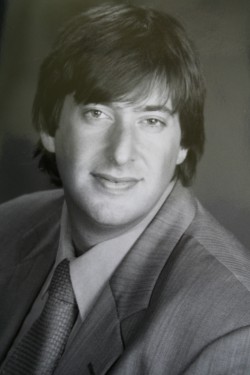
Jonathan Schwartz
For Super Crispy Entertainment’s Jonathan Schwartz, a diversified production slate means films with five, six, seven and eight-figure budgets.
Jonathan Schwartz entered the business as an entertainment lawyer at ICM, something he credits as the foundation of his current network of talent connections. But it was Peter Gabriel who helped turn him into a creative producer.
“Peter was a friend, and he asked me to go work for him in England,” Schwartz recalls. “One day we saw American Beauty, and he said, ‘Maybe we should make movies.’” So they did.
Schwartz decided to venture out on his own in 2004, making a go of it back in L.A. and founding his own company, Crispy Films (now hardened into Super Crispy Entertainment). He quickly set up a project for Steven Spielberg to direct, based on works by Mark Twain. Goran Dukic’s Wristcutters: A Love Story and Funny Games by Michael Haneke followed, where he cut his teeth in indie financing and physical production. It was then that he met Drake Doremus, a young filmmaker with a script called Spooner. It was Schwartz’s first foray into microbudget filmmaking, and he was hooked. Spooner would be the first of three films with Doremus, who Schwartz considers a true creative partner. Schwartz also formed a partnership with an investor and found himself in the unique position to be able to greenlight a low-budget movie whenever he thought it was ready. Not to mention, he says, “I finally didn’t have to worry about how to pay for lunch with James Franco anymore.”
What he did have to worry about was the dissolving indie film distribution landscape, in which Sundance glory had been reduced to VOD pennies. While continuing to partner with outside equity on larger budget films, such as Peter Weir’s period piece The Way Back with Colin Farrell, Schwartz focused on making more films for five or six figures instead of eight. Douchebag, which came out in late September, went to Sundance in 2010; Gregg Araki’s Kaboom, a French co-production that premiered in Cannes, was not a microbudget film but still extremely small for the stunts, effects and cast it pulled in. “We’ve made money back on all our films, and found theatrical releases for all of them,” he says. “You have to know what your sales are going to be and where your distribution is going to come from, and you have to absolutely make sure your budget makes sense in this reality.”
But how do you make a film good for no money? What does Schwartz look for in a script? Massive amounts of extras, tons of locations and chase sequences must be no-gos, right? “I’d rather have a perfect script and then solve its production challenges, rather than write small,” he says. Douchebag, for instance, called for far more locations than its budget might ordinarily support, so they shot in Schwartz’s home, his parents’ home, the writer’s house, and the director’s backyard. “If there’s a car chase, you drive around the streets of L.A. and see where you might be able to do a car chase.” — A.V.C.
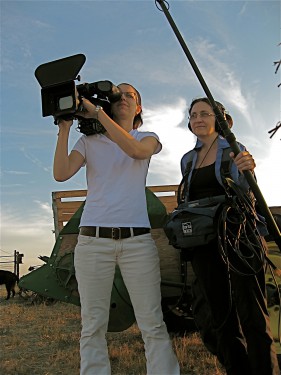
Jane Wagner & Tina Di Feliciantonio
Producer-directors Jane Wagner and Tina Di Feliciantonio make passion projects from their works for hire.
To make a great documentary, you need patience, talent and luck. To turn that great documentary into a business, you need business acumen and a few corporate clients.
Jane Wagner and Tina Di Feliciantonio’s directing credits include Girls Like Us, a documentary that looks at the lives of four urban teenage girls, which won the Sundance Grand Jury Prize in 1997. While the film is a small triumph of intimate vérité filmmaking, perhaps the larger career achievement is that the two women have managed to keep a production company afloat for more than 20 years.
After graduating from Stanford’s graduate program, the pair formed Naked Eye Productions. During those early days, Wagner recounts spending their time “honing as many skills as we could, like camera and sound. We worked on anything we could to learn the business of being an independent filmmaker.”
Being able to do everything, including accounting and insurance, means the pair has only staffed on “a project-by-project basis.” For years they relied on producing non-fiction series for television to support their independent projects. When the budget for those types of shows started to sink, the pair shifted gears and started to court high-level corporate philanthropic work.
When introduced to the curator of JP Morgan Chase’s art holdings, they learned that she was interested in pursuing a project about David Rockefeller’s traveling art collection. Over the course of a long conversation, they absorbed as much as they could about the client, including that the collection was traveling to a museum in Istanbul as part of a program to expose art to young children. They encouraged the curator to avoid commissioning a film that was nothing more than a series of “back-patting adults.”
Shortly after that initial meeting, Di Feliciantonio and Wagner pitched a short documentary that would follow the children in Istanbul who would see the art to the curator’s boss. Di Feliciantonio and Wagner emphasize that they’re careful to only pitch what is “exciting to us” — that way they end up working on a film they actually like. The client loved the idea, and the end result was a corporate film that got the duo’s creative juices flowing and kept their company in business.
One of Di Feliciantonio’s first jobs was working on a tissue commercial directed by the Maysles brothers. Making commercials is often a necessary part of the business of filmmaking, but it’s not always a necessary evil. Di Feliciantonio and Wagner’s enthusiasm for this type of work is inspiring — they’re smart enough filmmakers to know that what keeps them filming makes them better. — M.A.C.
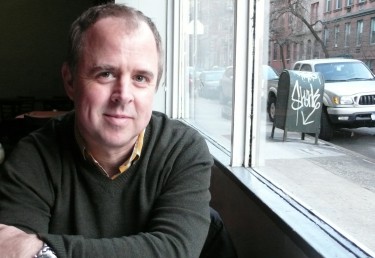
Gary Hustwit
For director Gary Hustwit, acting as his own producer means reinventing distribution.
Unlike most documentary filmmakers, Gary Hustwit never wrote a grant or approached investors while working on his directorial debut, Helvetica. Rather than try and convince what he calls “the gatekeepers” that there was an audience out there for documentaries about design, Hustwit became his own producer and “basically just slapped up a blog,” treating it “like one big pitch” for his documentary that explored typography’s effect on our visual culture.
By the time Helvetica was released, Hustwit had already been selling merchandise for nine months, including T-shirts, posters and a series of limited-edition prints designed by the graphic designers he interviewed for the film. It was not unusual for Hustwit to show up to a screening and find font-obsessed design junkies already wearing his T-shirts.
Effortlessly DIY, Hustwit refused multiple distribution deals, mainly because he thought he could do it better. Before he became a director, Hustwit founded Plexifilm, “a sort of independent record label for movies” which produced and distributed a number of films, including the Wilco documentary I Am Trying To Break Your Heart. As a producer, Hustwit would have “great monthlong runs in independent cinemas” only to find after the “ad costs and ticket splits” that he actually owed the theater “a couple thousand dollars.”
To avoid this happening to either Helvetica or its follow-up Objectified, Hustwit decided to approach distribution the way he used to approach concert tours when he worked at an independent record label in the ’80s. He took both films on the road, booking theaters himself and planning each screening as its own separate event, a strategy that meant he took home “almost a 100 percent of the ticket price.” He also made money by “selling posters and DVDs in the lobby.” Merch for the home viewer is available too. One of Hustwit’s largest revenue drivers is collectors’ editions of his films and marketing materials. A signed screen print by Swiss Dots for Helvetica is numbered in an edition of 100 and goes for $150. Objectified on a USB drive in a static-free bag with miniposters, badge and signed C-print goes for $75. (In an edition of 500, these are sold out.)
Hustwit’s is a distribution model that directly sustains his directorial pursuits. Because he’s the one watching the books, Hustwit can funnel whatever profits he makes directly back into the production process. A recent check he received from iTunes paid for flights to Chile for a shoot on Urbanized, his third and (supposedly) last film about design. (At SXSW this year Hustwit said that iTunes accounted for about $60,000 of the $600,000 his film had garnered to date.)
Hustwit encourages independent filmmakers to cut out any middleman they can, including publicists. When asked whether relying on blogs and tweets limits his audience to design junkies, Hustwit points out that even design junkies have friends and that it’s probably pretty unlikely that the “viewership of any particular magazine is bigger than a thousand people posting it to their followers on Twitter.” — M.A.C.
Jake Abraham
For Jake Abraham, veteran of InDigEnt and branded entertainment company Dandelion, film producing is about reinvention.
As a Producer and Partner at InDigEnt, the successful no-budget production company formed by Gary Winick and John Sloss, Jake Abraham seemed to have stumbled upon the perfect moviemaking model. Using the new, low-cost digital cameras, the company would make films with name directors and bona fide movie stars on low-six-figure budgets. Crew would work partially on deferment, and films would sell at their festival premieres or be distributed by partner IFC. The model worked — spectacularly, with films like Tadpole and Pieces of April — until it didn’t. IFC declined to re-up and, says Abraham, “making movies for $300,000 got harder. Every film that gets one little extra accommodation raises the expectations for the next film. Suddenly you are making $2 million films. Also, having people work for $100/day and gross profit participation only makes sense if you believe there will be minimum guarantees [offered by distributors] to pay them back. When I didn’t feel comfortable saying that there would be, it began to feel disingenuous.”
After InDigEnt, Abraham found himself working in “branded entertainment” — producing films commissioned by commercial clients. With Brett Morgan he made a “big-budget doc” portrait of commercial truckers commissioned by a trucking company. That led to a year as executive producer at Dandelion, the branded-content arm of Epoch Films. But this gig ended too. “I’m a believer in branded entertainment,” he says. “But the recession has made advertisers more conservative. Also, branded content has had more failures than successes. It is easy to point to expensive work that didn’t succeed.” Dandelion led to Abraham executive producing Lovely by Surprise, a feature by Dandelion’s “creative genius” Kurt Gunn. “It was an eye-opener,” Abraham says. “The quality of film was so high, but the reaction from buyers was so negative.”
Moving on, however, Abraham is now overseeing perhaps the biggest production of his career — one that proves there is dynamic work for film producers outside of the film industry. “A friend who is an advisor to Caroline Kennedy told me they were looking for someone to oversee the 50th anniversary of the Kennedy administration. “The project uses history and current events to synthesize for a new generation Kennedy’s achievements and get them excited [about civic action].” Abraham is overseeing live events in Boston and D.C., coordinating with the Kennedy Library, and working on a website that will include interactive and downloadable elements. “The thrust is to use the administration’s birthday to broadcast that while problems exist, hope should not be lost. There are tools out there to make world a better place.”
After the Kennedy project, Abraham is developing a feature with screenwriter Oren Uziel for commercial director Renny Maslow to direct, but he says he will continue to look for projects both in and out of film. “My business now includes smaller clients who need consulting work as well as larger projects that need a full-time, exclusive component. As a producer, enjoying the process of connecting creative people and resources together — that is the job.” — SM
In our print edition: “Letters to a Young Producer” — advice on the current environment and on starting out from producers Barry Mendel, Anne Carey, Tim Williams, Stephanie Allain Bray, Mynette Louie, Cora Olson & Jennifer Dubin, Karin Chien, Scott Franklin, Noah Harlan, Joshua Zeman and Ram Bergman.
